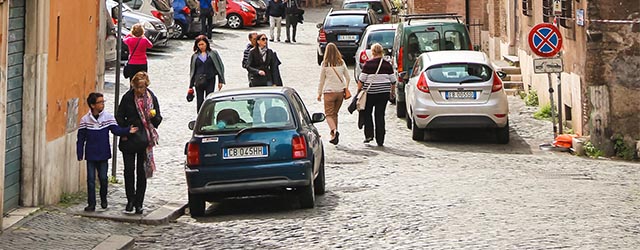The foundations for economic recovery have been laid by Matteo Renzi’s government, which is tackling fundamental issues at the heart of Italy’s problems. But he has yet to work his magic on public spending.

Since the 20072008 global financial crisis, the eurozone’s third-largest economy has been treading water. But a series of economic reforms, including a major shake-up of Italy’s notoriously intractable job market implemented by prime minister Matteo Renzi’s center-left Democratic Party government, suggests that “the sick man of Europe”—as the country was once labeled—may finally be emerging from a long economic malaise.
After a protracted period of negative growth, Italy’s economy recovered modestly in 2015, with real GDP growth of 0.9% year-on-year, according to the European Commission’s autumn economic assessment.

At 2010 prices, the country’s per capita GDP is expected to reach €25,423 ($27,600), less than what it was in 1997. But since Renzi took over in 2014, his administration has injected new life into Italy’s economy. With a schedule of reforms both big and small underway, the government has brought changes to the Italian labor market, making it easier for firms to fire unwanted workers and revamping the chaotic and inefficient system of unemployment benefits.
“It is surprising how rich in job creation is the current, although weak, economic recovery,” says Filippo Taddei, chief economist of the Democratic Party.”Jobs had declined for six years in a row, and we have been in recession for three consecutive years—something unheard of in a developed country. What we obtained in this climate with the job reform and the tax breaks was to get rich job creation at a time when the economic recovery is still relatively weak.”
Investors say the push for economic reforms has started to produce positive results. “Italy is on a promising track,” Holger Schmieding, chief economist of the privately owned bank Berenberg, wrote in his 2015 Euro Plus Monitor on how economic reforms among eurozone countries are progressing. “This partly reflects the sweeping labor market reform that Prime Minister Matteo Renzi pushed through parliament in January 2015. The experience of other European countries, such as the United Kingdom under Prime Minister Margaret Thatcher in the 1980s or Germany under Chancellor Gerhard Schröder in 2004, shows that labor market reform is one of the major ingredients to turn around an ossified country. Of course, Italy’s high debt burden still makes it vulnerable to potential bouts of market anxiety.”
Generous tax breaks, such as those given when an employee is hired for a permanent position, which imply a reduction of about 30% of the labor cost for the first three years of employment, are geared toward reducing Italy’s high rate of unemployment. For Italians ages 25 to 34, the jobless rate fell to 15.5% in the third quarter of 2015, down from 17.4% 12 months prior and 16.9% in the third quarter of 2013. For certain groups (women, younger workers and those in areas of the less economically developed south) unemployment rates are much higher, with peaks at 50%. These levels are uncommonly high for high-income countries, a group to which Italy still belongs.
ITALIAN COMPANIES ABROAD
Unemployment may be slowly turning a corner, but a sour note in the actions of the Renzi government so far is its inability to cut public spending, which stood at just over 50% of GDP in 2014. Two prestigious economists, the IMF’s Carlo Cottarelli and Roberto Perotti, a professor at Bocconi University, recently resigned their roles heading a review of government spending because of a substantial lack of progress. According to media reports, most of Perotti’s proposals for identifying cuts in government spending were disregarded.

“Who is coming to invest now in Italy will get the highest returns,” notes Taddei. “But to obtain these high returns, investors have to take the risk that the reform path may come to a halt.” Another pro-government economist, who declined to be named, estimates that the economic reforms approved so far are only 10% to 15% of what the country actually needs. A lot may depend on the outcome of the next election, which is expected in either 2017 or 2018.
Despite economic challenges in their home market, famous Italian brand names, such as eyewear company Luxottica, fashion company Armani and chocolate maker Ferrero, remain successful on the international stage. But they appear to be isolated examples of Italian economic success. Other multinational corporations, including energy firm Montedison, luxury giant Gucci and dairy firm Parmalat, have been acquired by foreign investors.
Small and medium-size companies, once the backbone of Italy’s economic miracle, have struggled under the weight of bureaucracy, heavy taxes and underdeveloped financial markets. “Italy has only a few industries where it is able to maintain its leadership,” says Carlo Vender, a founding partner at CapM Advisors, a mergers and acquisition firm in New York that has worked, over the years, on deals with such Italian brand names as Luxottica, Lavazza, Binda and Autogrill. These are mainly in niche sectors, such as the optical industry, hearing aids and airport management, adds Vender. “Italian companies are often small; even FCA [Fiat Chrysler] is still a small car-maker,” he adds. Vender says often only Italian companies with a capital structure in the hands of a bold entrepreneur are able to set themselves apart and maintain their leadership position. The others frequently succumb to more dynamic foreign competitors.
FINANCING THE RECOVERY
The limited development of Italy’s financial and capital markets represents a major constraint to the financing of its companies. The banking system—fragmented into small institutions weighed down by up to €300 billion of nonperforming loans—was highlighted by a recent €3.6 billion government-coordinated rescue of four lenders. The move turned a spotlight on the bad loans and threw the markets into turmoil in mid-January.
In the past few years, the Milan stock exchange, Borsa Italiana, has tried to foster the funding of small and medium-size firms, giving life to a market called AIM Italia and a platform called Elite, which seeks to give unlisted companies more visibility with investors. Thirty IPOs were launched in the Italian market in 2015, and a similar number is expected for 2016, says Borsa Italiana CEO Raffaele Jerusalmi, who remains positive about the prospects for Italy’s stock market capitalization.
“Italy’s market capitalization is around 33% of the country’s GDP, and it could easily double to 60% to 65% of GDP,” he says. “These are numbers close to what they have in Germany and France, and it is a target we can reach in three to four years.”
GFmag.com Data Summary: Italy
Central Bank: Bank of Italy |
|||
|---|---|---|---|
|
International Reserves |
$142.8 billion |
||
|
Gross Domestic Product (GDP) |
$ 1.8 trillion |
||
|
Real GDP Growth |
2013 |
2014 |
2015* |
|
GDP Per Capita—Current Prices |
$29,847* |
||
|
GDP—Composition By Sector* |
agriculture: |
industry: |
services: |
|
Inflation |
2013 |
2014 |
2015* |
|
Public Debt (general government |
2013 |
2014* |
2015* |
|
Government Bond Ratings (foreign currency) |
Standard & Poor’s |
Moody’s |
Moody’s Outlook |
|
FDI Inflows |
2012 |
2013 |
2014 |
* Estimates
Source: GFMag.com Country Economic Reports



